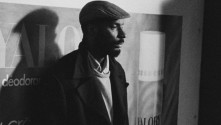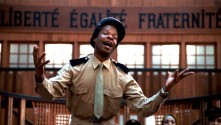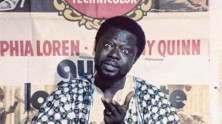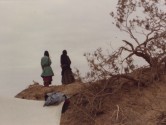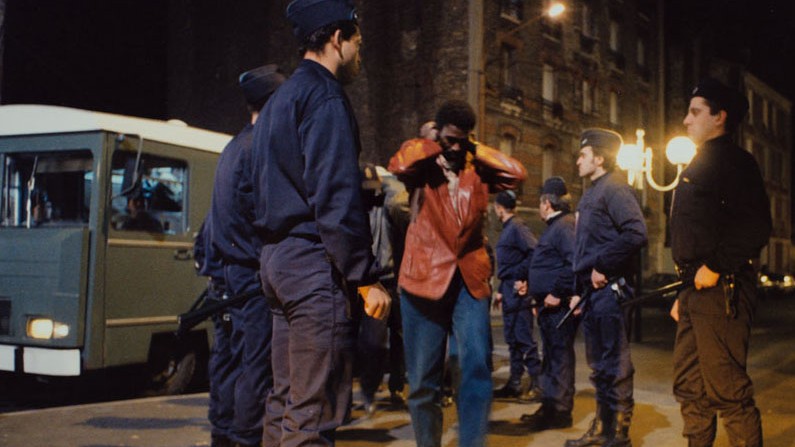
Black Light
(Lumière noire)
With Patrick Poivey, Inês de Medeiros, Gilles Ségal.
France, 1994, 35mm, color, 104 min.
French with English subtitles.
Print source: HFA
Lumière Noire is Med Hondo’s third cinematic adaptation of preexisting work. Coming in the wake of Daniel Boukman’s play Les Négriers, which became West Indies, and Abdoulaye Mamani’s Sarraounia, eponymously adapted, Lumière Noire is the director’s first adaptation of a work by a French writer, Didier Daeninckx, whose novel carried the same title.
The film tells the story of a police blunder at a roadblock near Charles de Gaulle airport following a terrorist alert. A motorist is killed in the process. His friend, an aircraft engineer, does not believe the police account of the incident. The only way for him to uncover the truth is to find an eyewitness to the killing—a young Malian held in a hotel at the airport and waiting to be deported along with one hundred other migrants from the same country. The aircraft engineer’s quest leads him all the way to Bamako and indeed the Malian countryside.
In this film, unlike any of his other films, Med Hondo experiments with the crime thriller—featuring in the process an homage to Orson Welles’ mythic opening sequence in Touch of Evil—to explore the reality of the deportation of African migrants back to their countries of origin. The director faced endless instances of “preventive censorship” (his term) in the refusal of permits to shoot at Charles de Gaulle airport and surrounding hotels. In pure guerilla filmmaking tradition, the director and his crew illegally shot some of the scenes at the Paris airport, in part by disguising themselves as airport workers. Only the direct intervention of the French President François Mitterand himself helped the situation.
With Lumière Noire, Hondo explores the ways in which the supposedly post-imperial state turns on its own citizens and devours them in situations of crisis/emergency, where, as aptly put in the film’s one-liner, “democracy stops where reason of the State begins.” Just as it flouted laws in the colonies, so it will in its own territory if it perceives itself to be in danger. Indeed, the film is a sophisticated figuration of the ways in which the State (Ministry of the interior) along with its repressive and ideological apparatuses (the police and the press, respectively) are deployed against the citizen-subject who is turned into interior/domestic Other. The film becomes a warning shot fired at the complacency of so-called democracies which stand by as violence is deployed by their states against constructed and supposedly remote Others, in willful ignorance of the boomerang effect of such violence. Indeed, it is almost a reactualization of Hannah Arendt’s argument on totalitarianism as partaking of the historical continuum between antisemitism and imperialism/colonialism.
Upon the release of Lumière Noire, the legendary French film magazine Positif wrote the following: “From time to time one sees on Parisian screens unusual meteors. This is one such film.”

